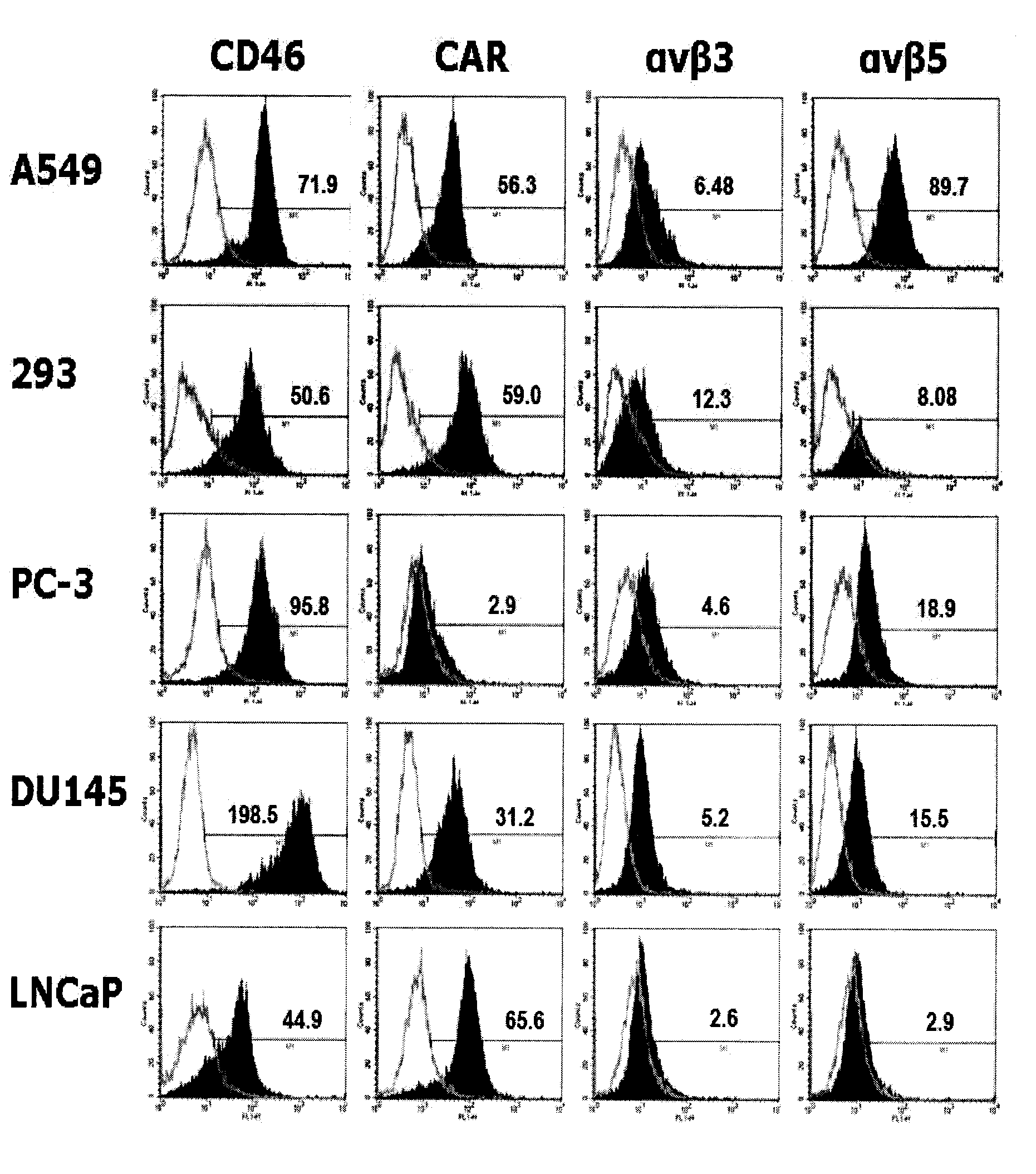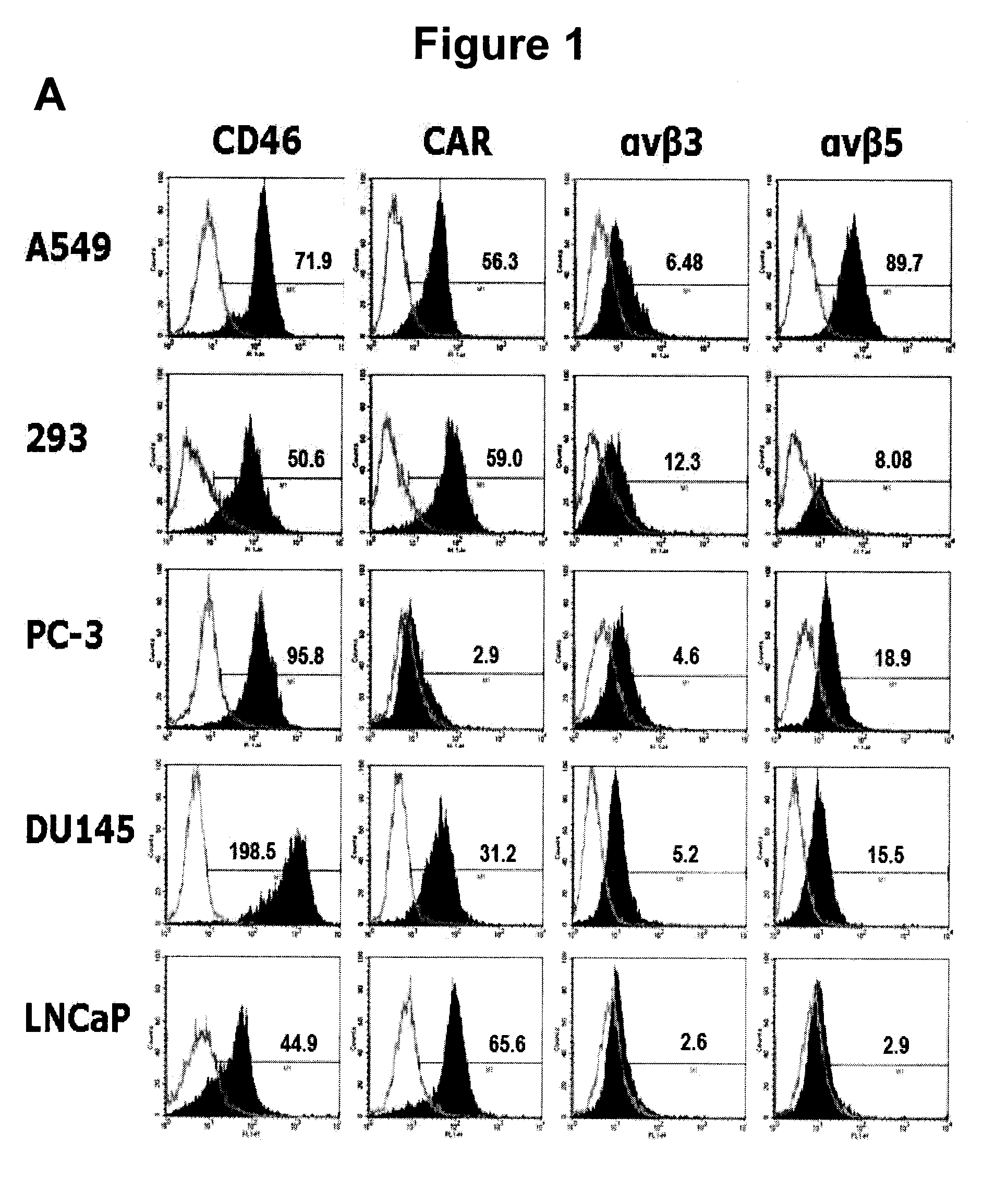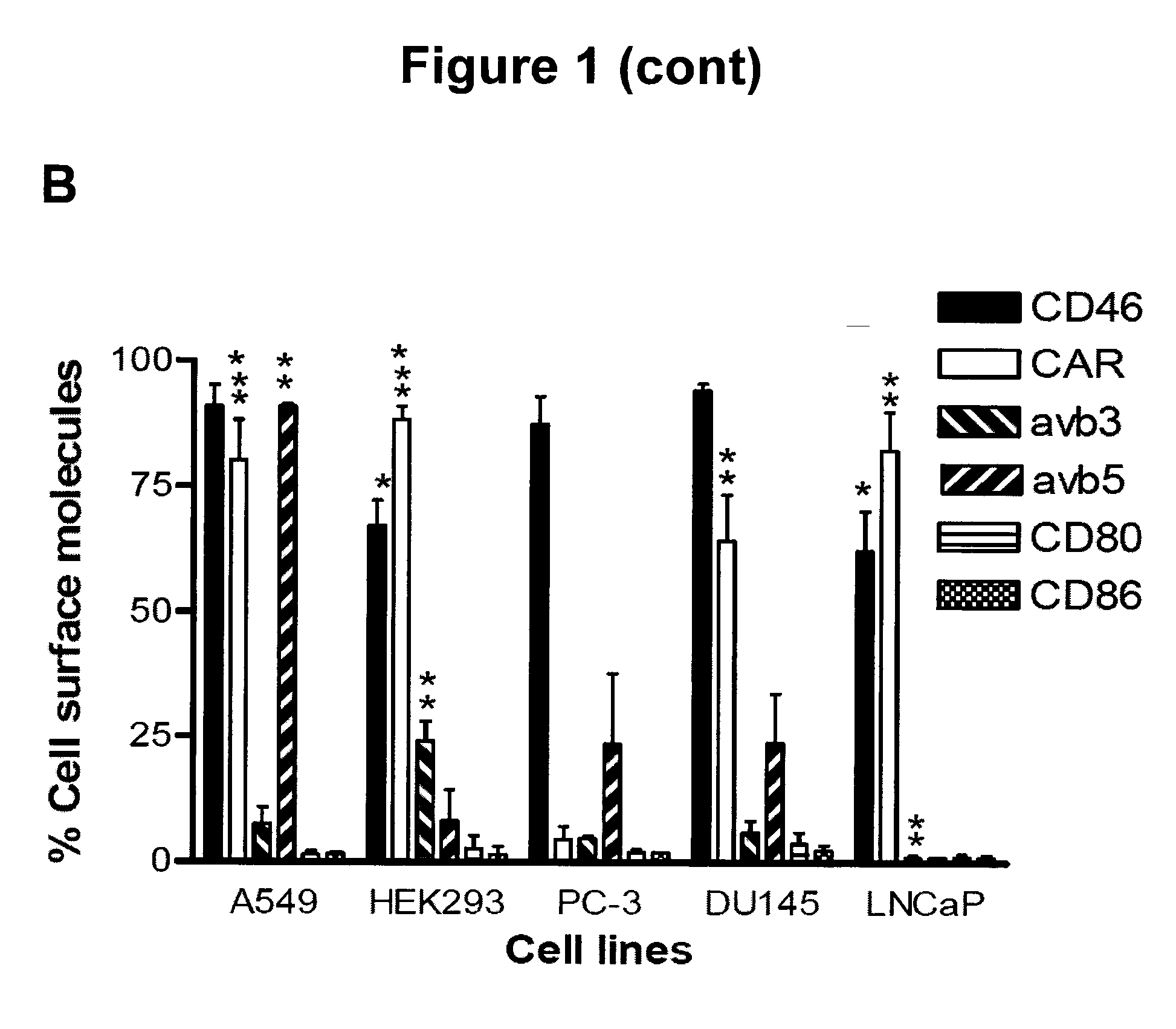Replicating viral vectors for gene therapy
a gene therapy and viral technology, applied in the field of gene therapy, can solve the problems of affecting the treatment effect of adenovirus infected cells, the immune response in the brain is not strong enough to eradicate adenovirus infected cells, and the use of adenovirus vectors to control cancer metastasis is hampered
- Summary
- Abstract
- Description
- Claims
- Application Information
AI Technical Summary
Benefits of technology
Problems solved by technology
Method used
Image
Examples
example 1
Replication-Competent Ad11p Vector (RCAd11p) Efficiently Transduces and Replicates in Hormone-Refractory Metastatic Prostate Cancer Cells
Materials and Methods
Cell Lines and Culture Conditions
[0113]The human embryonic kidney cell line 293 (HEK-293), which expresses the adenoviral E1A and E1B gene products, was purchased from Microbix Biosystems (Toronto, ON, Canada). The tumor cell lines LNCaP (from prostate; metastatic site: left supraclavicular lymph node carcinoma), DU 145 (from prostate; metastatic site: brain carcinoma), and PC-3 (from prostate; metastatic site: bone adenocarcinoma) were obtained from the American Type Culture Collection (ATCC, Manassas, Va.). The cell lines were all cultured at 37° C. in 5% CO2, using culture medium recommended by the ATCC. The HEK-293 cell line and human A549 cell line (respiratory oat cell carcinoma) were grown at 37° C. in Dulbecco's modified Eagle's medium (Sigma-Aldrich, St. Louis, Mo.), 20 mM HEPES (pH 7.4), penicillin-streptomycin (100 I...
example 2
Effect of Replication-Competent Ad11p Vector on the Growth of Human Colon T84 Tumours in Nude Mice
[0153]In Vivo Oncolytic Model with RCAd11p Vector.
[0154]T84 cells derived from a lung metastasis of a colorectal adenocarcinoma and HT 29 derived from colorectal adenocarcinoma were used in the experiment. 107 T84 cells or H-29 cells in 0.2 ml were subcutaneously transplanted into left and right flank region of Balb / c nude mice, the control group mice were injected with only PBS. As colon tumor grew up to at least 75 mm3 3 weeks after injection, 50 μg of RCAd11pGFP / tumor was injected into mice with intratumoral administration. Tumor volume was recorded weekly. The mice were sacrificed approximately 6 weeks after viral injection.
[0155]As can be seen from the results presented in FIG. 10, treatment with the adenovirus vector RCAd11pGFP reduced the growth of the transplanted colon tumours to a similar extent as treatment with wild-type Ad11p, demonstrating that the recombinant adenovirus v...
PUM
| Property | Measurement | Unit |
|---|---|---|
| diameter | aaaaa | aaaaa |
| pH | aaaaa | aaaaa |
| wavelength | aaaaa | aaaaa |
Abstract
Description
Claims
Application Information
 Login to View More
Login to View More - R&D
- Intellectual Property
- Life Sciences
- Materials
- Tech Scout
- Unparalleled Data Quality
- Higher Quality Content
- 60% Fewer Hallucinations
Browse by: Latest US Patents, China's latest patents, Technical Efficacy Thesaurus, Application Domain, Technology Topic, Popular Technical Reports.
© 2025 PatSnap. All rights reserved.Legal|Privacy policy|Modern Slavery Act Transparency Statement|Sitemap|About US| Contact US: help@patsnap.com



